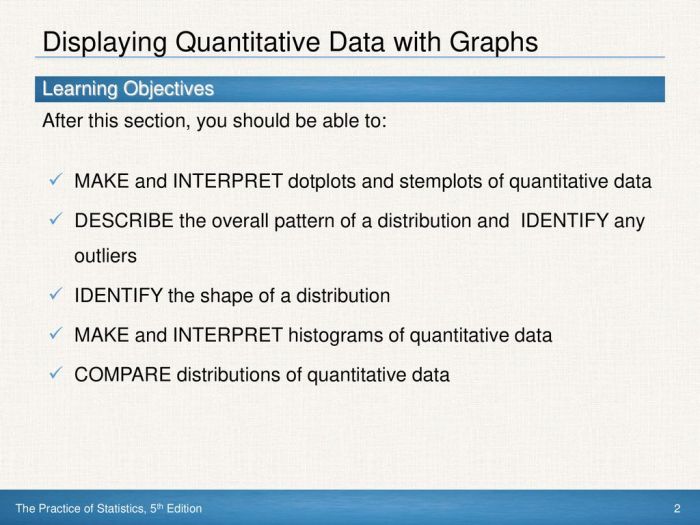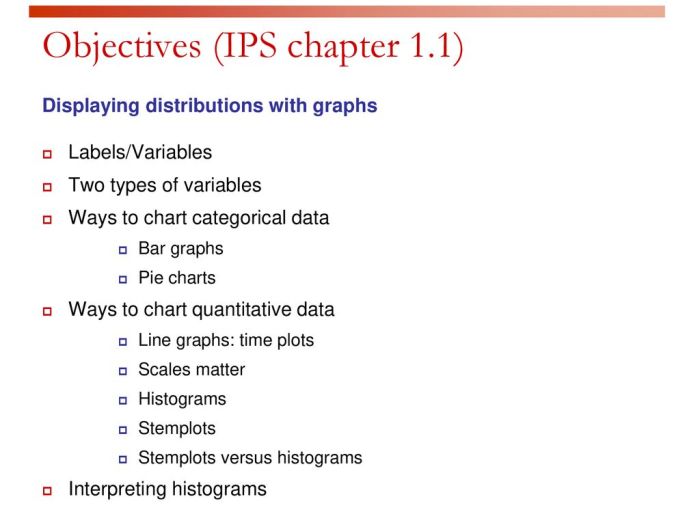Lesson 1.4 displaying quantitative data stemplots – Lesson 1.4: Displaying Quantitative Data with Stemplots introduces a powerful graphical tool for organizing and visualizing quantitative data. Stemplots, also known as stem-and-leaf plots, provide a clear and intuitive representation of data distribution, enabling researchers and analysts to identify patterns, trends, and outliers.
This lesson will delve into the concepts, construction, and interpretation of stemplots, equipping learners with the skills to effectively communicate and analyze quantitative data.
Understanding Stemplots: Lesson 1.4 Displaying Quantitative Data Stemplots

Stemplots are graphical representations of quantitative data that provide a visual summary of the distribution. They consist of two parts: a stem and a leaf. The stem is the leftmost digit or digits of the data value, and the leaf is the rightmost digit or digits.
Stemplots are useful for identifying patterns, trends, and outliers in data. They are also easy to construct and interpret, making them a valuable tool for data exploration and analysis.
Components of a Stem Plot
- Stem:The leftmost digit or digits of the data value.
- Leaf:The rightmost digit or digits of the data value.
- Key:A legend that explains the relationship between the stem and leaf values.
Example of a Stem Plot, Lesson 1.4 displaying quantitative data stemplots
The following is a stem plot of the heights (in inches) of a group of students:
Stem Leaf ----- ----- 5 5 7 9 6 0 1 2 3 5 6 7 8 9 7 0 1 2 3 4 5 6 7 8 9
The stem values are the tens digits of the heights, and the leaf values are the ones digits.
The key indicates that each stem value represents 10 units. For example, the stem value 6 represents heights between 60 and 69 inches.
FAQs
What are the advantages of using stemplots?
Stemplots offer several advantages, including their simplicity, ease of construction, and ability to reveal patterns and outliers in data distribution.
How do I determine the stem and leaf values for a stemplot?
To determine the stem and leaf values, the data is first organized in ascending order. The leftmost digit of each data point becomes the stem, and the remaining digits become the leaf.
What is the purpose of the key in a stemplot?
The key in a stemplot provides a legend that explains the relationship between the stems and leaves. It indicates the value represented by each stem and leaf combination.


